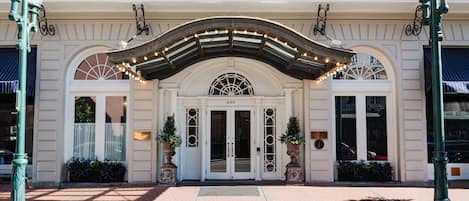The elegant townhouse at 838 Camp Street was designed by James Harrison Dakin (1806-1852), an influential architect in New Orleans who also designed the landmark St. Patrick’s Cathedral down the street. The land was first owned by Gasquet, Parish & Co., a commission merchant company largely responsible for the initial development of the American Sector. Construction on this townhouse, originally one of nine sister “rowhouses,” began in the early 1840s.
The first known inhabitant of the townhouse was Walter Cox, a cotton merchant and owner of the cotton firm W. Cox & Co. established in 1858. It appears that the Civil War resulted in Cox’s firm going bankrupt, as his home was sold in a sheriff’s auction in 1867. The house was purchased by attorney Alfred J. Philips, partner in the esteemed New Orleans firm of Roselins & Philips. Sometime during the 1870s, ownership of the property transferred from Philips to his brother-in-law, influential attorney John Blackstone Cotton from Georgia, who married Alfred’s younger sister Sophia in 1852. Blackstone served as a New Orleans City Attorney in 1850, as a District Judge (1853-1857) and as Superintendent of Elections (1857-1858). During the Civil War, Cotton served as a Confederate Army Officer from 1861 until he fell ill in the field in 1862.
Margaret Robinson Barnett (1887–1977) purchased the property in May of 1921. Margaret owned and operated “Dixie Stove Works” out of what is now the property’s commercial space at 840 Camp. The company boasted itself as “the South’s largest manufacturer of stove parts.” Margaret and her husband also housed “Roomers” in the properties residential units beginning in 1930. These renters hailed from such varied places as Germany, New York, Louisiana, Minnesota, and South Dakota. The residence had become primarily commercial in the latter half of the 20th century, with Dixie Stove Works as its last commercial occupant.







